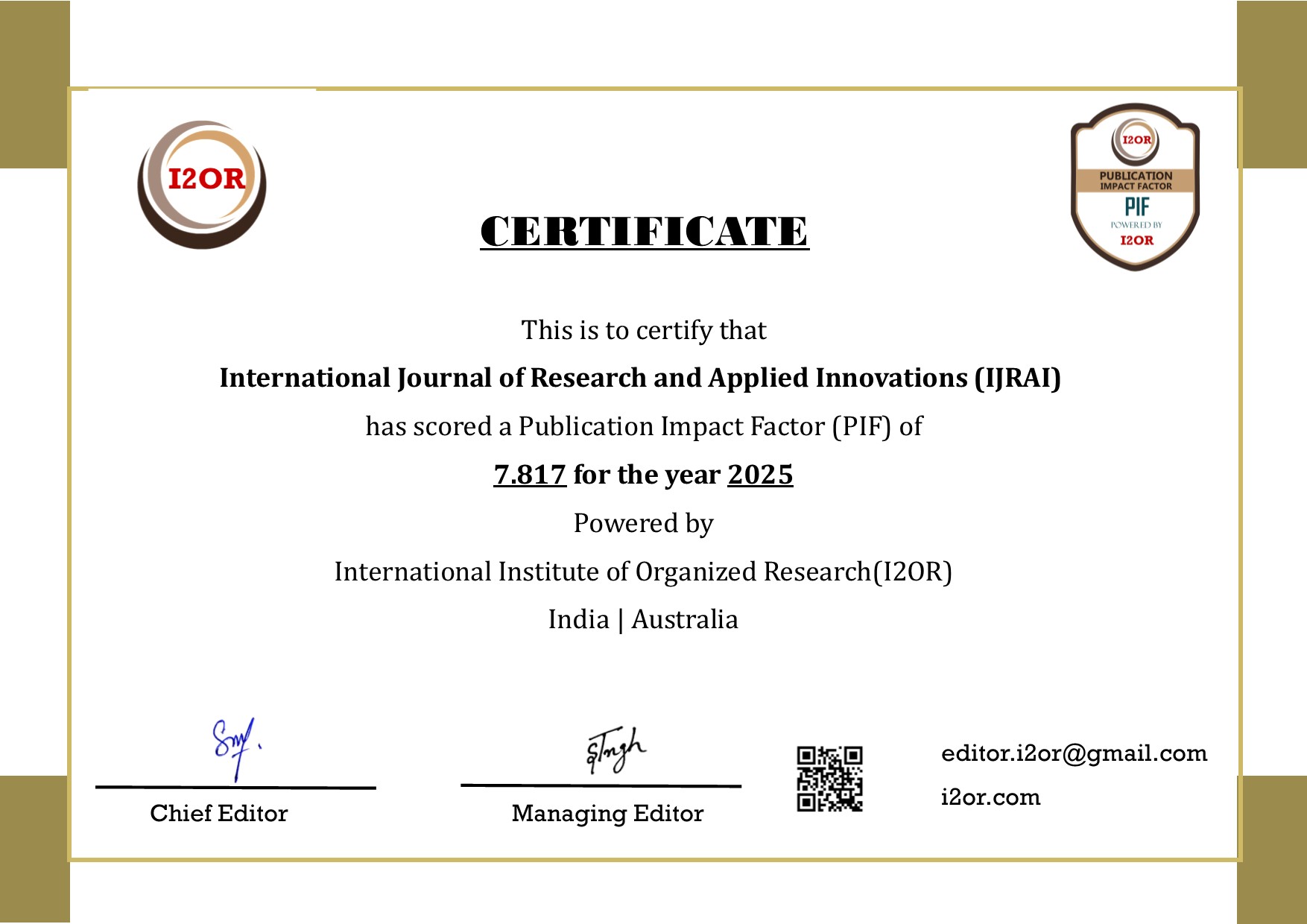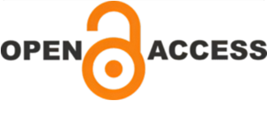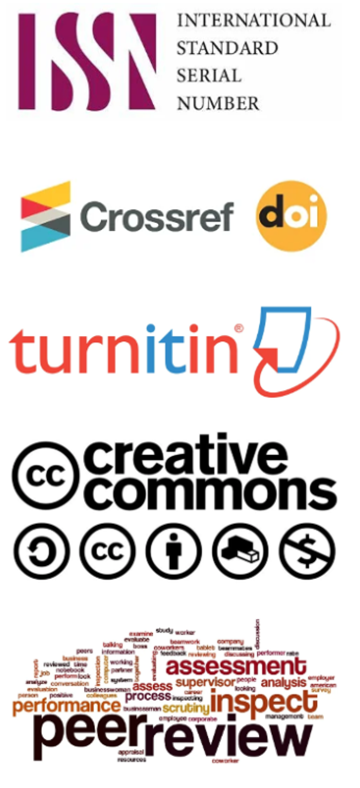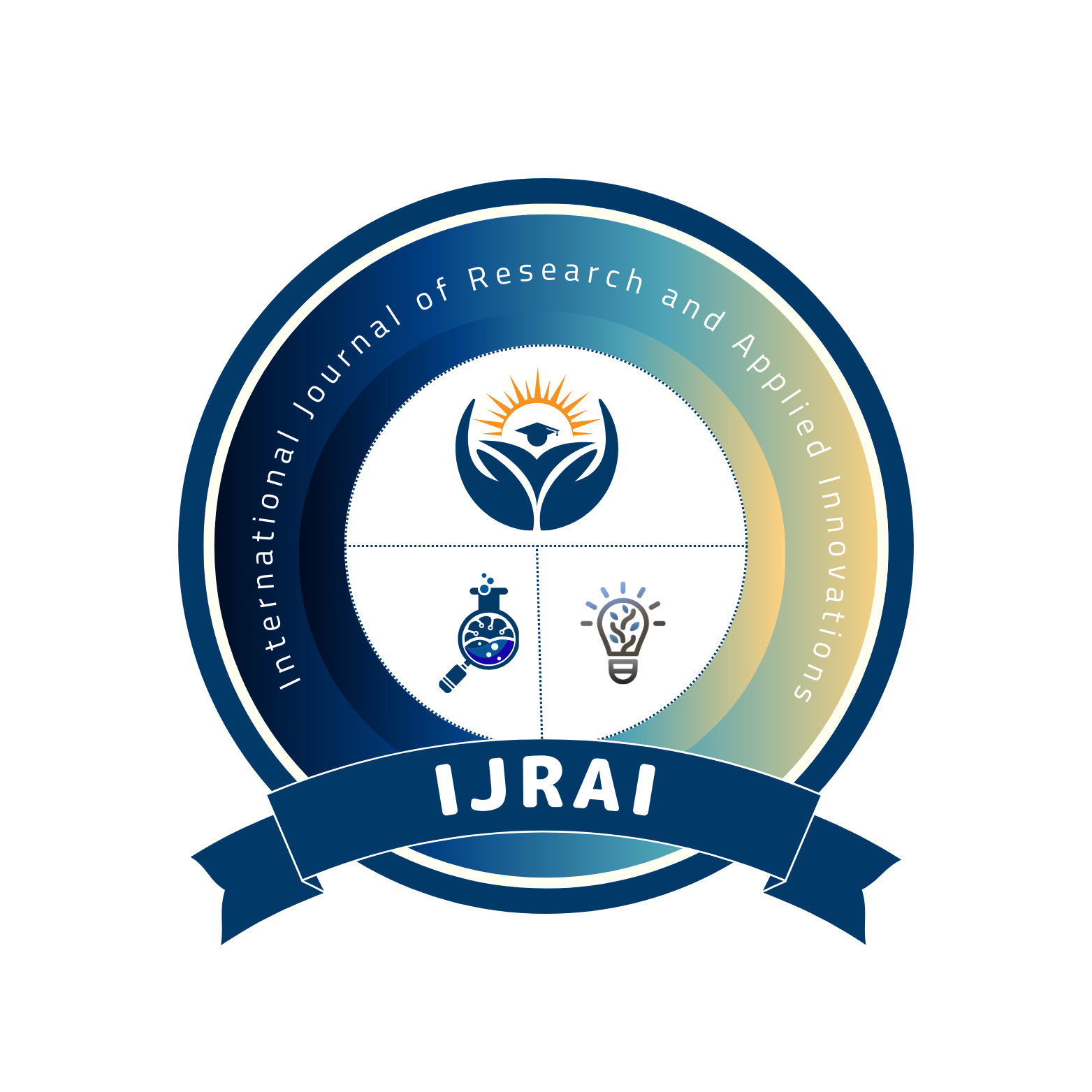Real-Time Data Processing Pipelines in Low Latency Systems
DOI:
https://doi.org/10.15662/IJRAI.2022.0506011Keywords:
real-time data processing, low latency, stream processing, event-driven architecture, data ingestion, machine learning, cloud-native technologies, performance monitoringAbstract
In the era of data-driven decision-making, real-time data processing has become a critical component for a variety of applications, ranging from financial services to IoT systems. Low latency is often a top priority in these systems, as the ability to process and act on data with minimal delay can significantly enhance operational efficiency, improve customer experiences, and provide competitive advantages. This paper explores the design, implementation, and optimization of real-time data processing pipelines in low-latency systems, focusing on techniques that reduce processing time, improve system responsiveness, and ensure scalability in complex, distributed environments.
The first section of this paper delves into the fundamental concepts of real-time data processing and its distinction from batch processing, highlighting the requirements and challenges that make low-latency systems unique. Key aspects such as stream processing, event-driven architectures, and the use of specialized hardware like Field Programmable Gate Arrays (FPGAs) and Graphics Processing Units (GPUs) are discussed. The emphasis is placed on how these technologies can be leveraged to minimize latency and meet the demands of real-time data flows.
The second section examines the core components of a real-time data pipeline, including data ingestion, processing, and output. The role of technologies such as Apache Kafka, Apache Flink, and Apache Pulsar in data ingestion is explored, as these tools provide high-throughput messaging and low-latency streaming capabilities that are essential in real-time systems. Additionally, the use of in-memory computing frameworks such as Apache Ignite and Redis, which facilitate quick data processing by keeping data in RAM, is also evaluated. This section emphasizes the importance of stream processing frameworks in efficiently managing large volumes of data while ensuring that latency is minimized throughout the pipeline.
Next, the paper explores advanced techniques for latency optimization within the pipeline. These techniques include parallel processing, sharding, and the use of low-latency networking protocols to reduce transmission delays. The integration of machine learning models for predictive analytics within the real-time pipeline is also examined, as they can provide valuable insights and predictions on the fly, enhancing decision-making capabilities in applications such as predictive maintenance, fraud detection, and real-time recommendation systems. Additionally, the impact of cloud-native technologies like Kubernetes and serverless computing on reducing infrastructure-related latency is discussed, providing a more flexible and scalable approach to real-time data processing.The paper also highlights the importance of monitoring and managing system performance to ensure that latency goals are consistently met. Techniques for real-time monitoring of data pipeline performance, including the use of distributed tracing and observability tools such as Prometheus and Grafana, are explored. These tools help in tracking the flow of data through the system and identifying potential bottlenecks that may cause delays, allowing for proactive management of latency and system health.
Furthermore, the challenges of implementing real-time data pipelines in low-latency systems are discussed. These include handling data inconsistencies, managing large-scale distributed systems, and ensuring fault tolerance and high availability. The paper provides practical insights into how to design systems that can gracefully handle failures without compromising data integrity or introducing significant latency.
In the final section, future trends in real-time data processing pipelines are explored. The role of edge computing in reducing latency for IoT applications is examined, as well as the potential for integrating 5G networks to support ultra-low-latency communication. The evolution of AI and machine learning models, particularly in enhancing real-time data processing capabilities, is also considered. The future of real-time data pipelines lies in the continued development of more sophisticated algorithms, hardware accelerators, and distributed systems that will further optimize latency and scalability for an increasingly connected world.
References
1. Khemraj, S., Thepa, P. C. A., Patnaik, S., Chi, H., & Wu, W. Y. (2022). Mindfulness meditation and life satisfaction effective on job performance. NeuroQuantology, 20(1), 830–841.
2. Sutthisanmethi, P., Wetprasit, S., & Thepa, P. C. A. (2022). The promotion of well-being for the elderly based on the 5 Āyussadhamma in the Dusit District, Bangkok, Thailand: A case study of Wat Sawaswareesimaram community. International Journal of Health Sciences, 6(3), 1391–1408.
3. Thepa, P. C. A. (2022). Buddhadhamma of peace. International Journal of Early Childhood, 14(3).
4. Phattongma, P. W., Trung, N. T., Phrasutthisanmethi, S. K., Thepa, P. C. A., & Chi, H. (2022). Phenomenology in education research: Leadership ideological. Webology, 19(2).
5. Khemraj, S., Thepa, P., Chi, A., Wu, W., & Samanta, S. (2022). Sustainable wellbeing quality of Buddhist meditation centre management during coronavirus outbreak (COVID-19) in Thailand using the quality function deployment (QFD), and KANO. Journal of Positive School Psychology, 6(4), 845–858.
6. Thepa, D. P. P. C. A., Sutthirat, N., & Nongluk (2022). Buddhist philosophical approach on the leadership ethics in management. Journal of Positive School Psychology, 6(2), 1289–1297.
7. Rajeshwari: Manasa R, K Karibasappa, Rajeshwari J, Autonomous Path Finder and Object Detection Using an Intelligent Edge Detection Approach, International Journal of Electrical and Electronics Engineering, Aug 2022, Scopus indexed, ISSN: 2348-8379, Volume 9 Issue 8, 1-7, August 2022. https://doi.org/10.14445/23488379/IJEEE-V9I8P101
8. Rajeshwari.J,K. Karibasappa ,M.T. Gopalkrishna, “Three Phase Security System for Vehicles using Face Recognition on Distributed Systems", Third International conference on informational system design and intelligent applications, Volume 3 , pp.563-571, 8-9 January, Springer India 2016. Index: Springer
9. Sunitha.S, Rajeshwari.J, Designing and Development of a New Consumption Model from Big Data to form Data-as-a- Product (DaaP), International Conference on Innovative Mechanisms for Industry Applications (ICIMIA 2017), 978- 1-5090-5960-7/17/$31.00 ©2017 IEEE.
10. M. Suresh Kumar, J. Rajeshwari & N. Rajasekhar," Exploration on Content-Based Image Retrieval Methods", International Conference on Pervasive Computing and Social Networking, ISBN 978-981-16-5640-8, Springer, Singapore Jan (2022).
11. Vadisetty, R., Polamarasetti, A., Guntupalli, R., Raghunath, V., Jyothi, V. K., & Kudithipudi, K. (2022). AI-Driven Cybersecurity: Enhancing Cloud Security with Machine Learning and AI Agents. Sateesh kumar and Raghunath, Vedaprada and Jyothi, Vinaya Kumar and Kudithipudi, Karthik, AI-Driven Cybersecurity: Enhancing Cloud Security with Machine Learning and AI Agents (February 07, 2022).
12. Polamarasetti, A., Vadisetty, R., Vangala, S. R., Chinta, P. C. R., Routhu, K., Velaga, V., ... & Boppana, S. B. (2022). Evaluating Machine Learning Models Efficiency with Performance Metrics for Customer Churn Forecast in Finance Markets. International Journal of AI, BigData, Computational and Management Studies, 3(1), 46-55.
13. Polamarasetti, A., Vadisetty, R., Vangala, S. R., Bodepudi, V., Maka, S. R., Sadaram, G., ... & Karaka, L. M. (2022). Enhancing Cybersecurity in Industrial Through AI-Based Traffic Monitoring IoT Networks and Classification. International Journal of Artificial Intelligence, Data Science, and Machine Learning, 3(3), 73-81.
14. Vadisetty, R., Polamarasetti, A., Guntupalli, R., Rongali, S. K., Raghunath, V., Jyothi, V. K., & Kudithipudi, K. (2021). Legal and Ethical Considerations for Hosting GenAI on the Cloud. International Journal of AI, BigData, Computational and Management Studies, 2(2), 28-34.
15. Vadisetty, R., Polamarasetti, A., Guntupalli, R., Raghunath, V., Jyothi, V. K., & Kudithipudi, K. (2021). Privacy-Preserving Gen AI in Multi-Tenant Cloud Environments. Sateesh kumar and Raghunath, Vedaprada and Jyothi, Vinaya Kumar and Kudithipudi, Karthik, Privacy-Preserving Gen AI in Multi-Tenant Cloud Environments (January 20, 2021).
16. Vadisetty, R., Polamarasetti, A., Guntupalli, R., Rongali, S. K., Raghunath, V., Jyothi, V. K., & Kudithipudi, K. (2020). Generative AI for Cloud Infrastructure Automation. International Journal of Artificial Intelligence, Data Science, and Machine Learning, 1(3), 15-20.
17. Sowjanya, A., Swaroop, K. S., Kumar, S., & Jain, A. (2021, December). Neural Network-based Soil Detection and Classification. In 2021 10th International Conference on System Modeling & Advancement in Research Trends (SMART) (pp. 150-154). IEEE.
18. Harshitha, A. G., Kumar, S., & Jain, A. (2021, December). A Review on Organic Cotton: Various Challenges, Issues and Application for Smart Agriculture. In 2021 10th International Conference on System Modeling & Advancement in Research Trends (SMART) (pp. 143-149). IEEE.
19. Jain, V., Saxena, A. K., Senthil, A., Jain, A., & Jain, A. (2021, December). Cyber-bullying detection in social media platform using machine learning. In 2021 10th International Conference on System Modeling & Advancement in Research Trends (SMART) (pp. 401-405). IEEE.
20. Gandhi Vaibhav, C., & Pandya, N. Feature Level Text Categorization For Opinion Mining. International Journal of Engineering Research & Technology (IJERT) Vol, 2, 2278-0181.
21. Gandhi, V. C., Prajapati, J. A., & Darji, P. A. (2012). Cloud computing with data warehousing. International Journal of Emerging Trends & Technology in Computer Science (IJETTCS), 1(3), 72-74.
22. Gandhi, V. C. (2012). Review on Comparison between Text Classification Algorithms/Vaibhav C. Gandhi, Jignesh A. Prajapati. International Journal of Emerging Trends & Technology in Computer Science (IJETTCS), 1(3).
23. Patel, D., Gandhi, V., & Patel, V. (2014). Image registration using log pola
24. Patel, D., & Gandhi, V. Image Registration Using Log Polar Transform.
25. Desai, H. M., & Gandhi, V. (2014). A survey: background subtraction techniques. International Journal of Scientific & Engineering Research, 5(12), 1365.
26. Maisuriya, C. S., & Gandhi, V. (2015). An Integrated Approach to Forecast the Future Requests of User by Weblog Mining. International Journal of Computer Applications, 121(5).
27. Maisuriya, C. S., & Gandhi, V. (2015). An Integrated Approach to Forecast the Future Requests of User by Weblog Mining. International Journal of Computer Applications, 121(5).
28. esai, H. M., Gandhi, V., & Desai, M. (2015). Real-time Moving Object Detection using SURF. IOSR Journal of Computer Engineering (IOSR-JCE), 2278-0661.
29. Gandhi Vaibhav, C., & Pandya, N. Feature Level Text Categorization For Opinion Mining. International Journal of Engineering Research & Technology (IJERT) Vol, 2, 2278-0181.
30. Singh, A. K., Gandhi, V. C., Subramanyam, M. M., Kumar, S., Aggarwal, S., & Tiwari, S. (2021, April). A Vigorous Chaotic Function Based Image Authentication Structure. In Journal of Physics: Conference Series (Vol. 1854, No. 1, p. 012039). IOP Publishing.
31. Jain, A., Sharma, P. C., Vishwakarma, S. K., Gupta, N. K., & Gandhi, V. C. (2021). Metaheuristic Techniques for Automated Cryptanalysis of Classical Transposition Cipher: A Review. Smart Systems: Innovations in Computing: Proceedings of SSIC 2021, 467-478.
32. Gandhi, V. C., & Gandhi, P. P. (2022, April). A survey-insights of ML and DL in health domain. In 2022 International Conference on Sustainable Computing and Data Communication Systems (ICSCDS) (pp. 239-246). IEEE.
33. Dhinakaran, M., Priya, P. K., Alanya-Beltran, J., Gandhi, V., Jaiswal, S., & Singh, D. P. (2022, December). An Innovative Internet of Things (IoT) Computing-Based Health Monitoring System with the Aid of Machine Learning Approach. In 2022 5th International Conference on Contemporary Computing and Informatics (IC3I) (pp. 292-297). IEEE.
34. Dhinakaran, M., Priya, P. K., Alanya-Beltran, J., Gandhi, V., Jaiswal, S., & Singh, D. P. (2022, December). An Innovative Internet of Things (IoT) Computing-Based Health Monitoring System with the Aid of Machine Learning Approach. In 2022 5th International Conference on Contemporary Computing and Informatics (IC3I) (pp. 292-297). IEEE.
35. Sharma, S., Sanyal, S. K., Sushmita, K., Chauhan, M., Sharma, A., Anirudhan, G., ... & Kateriya, S. (2021). Modulation of phototropin signalosome with artificial illumination holds great potential in the development of climate-smart crops. Current Genomics, 22(3), 181-213.
36. Agrawal, N., Jain, A., & Agarwal, A. (2019). Simulation of network on chip for 3D router architecture. International Journal of Recent Technology and Engineering, 8(1C2), 58-62.
37. Jain, A., AlokGahlot, A. K., & RakeshDwivedi, S. K. S. (2017). Design and FPGA Performance Analysis of 2D and 3D Router in Mesh NoC. Int. J. Control Theory Appl. IJCTA ISSN, 0974-5572.
38. Arulkumaran, R., Mahimkar, S., Shekhar, S., Jain, A., & Jain, A. (2021). Analyzing information asymmetry in financial markets using machine learning. International Journal of Progressive Research in Engineering Management and Science, 1(2), 53-67.
39. Subramanian, G., Mohan, P., Goel, O., Arulkumaran, R., Jain, A., & Kumar, L. (2020). Implementing Data Quality and Metadata Management for Large Enterprises. International Journal of Research and Analytical Reviews (IJRAR), 7(3), 775.
40. Kumar, S., Prasad, K. M. V. V., Srilekha, A., Suman, T., Rao, B. P., & Krishna, J. N. V. (2020, October). Leaf disease detection and classification based on machine learning. In 2020 International Conference on Smart Technologies in Computing, Electrical and Electronics (ICSTCEE) (pp. 361-365). IEEE.
41. Karthik, S., Kumar, S., Prasad, K. M., Mysurareddy, K., & Seshu, B. D. (2020, November). Automated home-based physiotherapy. In 2020 International Conference on Decision Aid Sciences and Application (DASA) (pp. 854-859). IEEE.
42. Rani, S., Lakhwani, K., & Kumar, S. (2020, December). Three dimensional wireframe model of medical and complex images using cellular logic array processing techniques. In International conference on soft computing and pattern recognition (pp. 196-207). Cham: Springer International Publishing.
43. Raja, R., Kumar, S., Rani, S., & Laxmi, K. R. (2020). Lung segmentation and nodule detection in 3D medical images using convolution neural network. In Artificial Intelligence and Machine Learning in 2D/3D Medical Image Processing (pp. 179-188). CRC Press.
44. Kantipudi, M. P., Kumar, S., & Kumar Jha, A. (2021). Scene text recognition based on bidirectional LSTM and deep neural network. Computational Intelligence and Neuroscience, 2021(1), 2676780.
45. Rani, S., Gowroju, S., & Kumar, S. (2021, December). IRIS based recognition and spoofing attacks: A review. In 2021 10th International Conference on System Modeling & Advancement in Research Trends (SMART) (pp. 2-6). IEEE.
46. Kumar, S., Rajan, E. G., & Rani, S. (2021). Enhancement of satellite and underwater image utilizing luminance model by color correction method. Cognitive Behavior and Human Computer Interaction Based on Machine Learning Algorithm, 361-379.
47. Rani, S., Ghai, D., & Kumar, S. (2021). Construction and reconstruction of 3D facial and wireframe model using syntactic pattern recognition. Cognitive Behavior and Human Computer Interaction Based on Machine Learning Algorithm, 137-156.
48. Rani, S., Ghai, D., & Kumar, S. (2021). Construction and reconstruction of 3D facial and wireframe model using syntactic pattern recognition. Cognitive Behavior and Human Computer Interaction Based on Machine Learning Algorithm, 137-156.
49. Kumar, S., Raja, R., Tiwari, S., & Rani, S. (Eds.). (2021). Cognitive behavior and human computer interaction based on machine learning algorithms. John Wiley & Sons.
50. Shitharth, S., Prasad, K. M., Sangeetha, K., Kshirsagar, P. R., Babu, T. S., & Alhelou, H. H. (2021). An enriched RPCO-BCNN mechanisms for attack detection and classification in SCADA systems. IEEE Access, 9, 156297-156312.
51. Kantipudi, M. P., Rani, S., & Kumar, S. (2021, November). IoT based solar monitoring system for smart city: an investigational study. In 4th Smart Cities Symposium (SCS 2021) (Vol. 2021, pp. 25-30). IET.
52. Sravya, K., Himaja, M., Prapti, K., & Prasad, K. M. (2020, September). Renewable energy sources for smart city applications: A review. In IET Conference Proceedings CP777 (Vol. 2020, No. 6, pp. 684-688). Stevenage, UK: The Institution of Engineering and Technology.
53. Raj, B. P., Durga Prasad, M. S. C., & Prasad, K. M. (2020, September). Smart transportation system in the context of IoT based smart city. In IET Conference Proceedings CP777 (Vol. 2020, No. 6, pp. 326-330). Stevenage, UK: The Institution of Engineering and Technology.
54. Meera, A. J., Kantipudi, M. P., & Aluvalu, R. (2019, December). Intrusion detection system for the IoT: A comprehensive review. In International Conference on Soft Computing and Pattern Recognition (pp. 235-243). Cham: Springer International Publishing.
55. Garlapati Nagababu, H. J., Patel, R., Joshi, P., Kantipudi, M. P., & Kachhwaha, S. S. (2019, May). Estimation of uncertainty in offshore wind energy production using Monte-Carlo approach. In ICTEA: International Conference on Thermal Engineering (Vol. 1, No. 1).
56. Patchamatla, P. S. (2022). Performance Optimization Techniques for Docker-based Workloads.
57. Patchamatla, P. S. (2020). Comparison of virtualization models in OpenStack. International Journal of Multidisciplinary Research in Science, Engineering and Technology, 3(03).
58. Patchamatla, P. S., & Owolabi, I. O. (2020). Integrating serverless computing and kubernetes in OpenStack for dynamic AI workflow optimization. International Journal of Multidisciplinary Research in Science, Engineering and Technology, 1, 12.
59. Patchamatla, P. S. S. (2019). Comparison of Docker Containers and Virtual Machines in Cloud Environments. Available at SSRN 5180111.
60. Patchamatla, P. S. S. (2021). Implementing Scalable CI/CD Pipelines for Machine Learning on Kubernetes. International Journal of Multidisciplinary and Scientific Emerging Research, 9(03), 10-15662.
61. Thepa, P. C. A. (2022). Conservation of the Thai Buddhist way of the community: A case study of the tradition of alms on the water, Suwannaram temple, Nakhon Pathom Province. NeuroQuantology, 20(12), 2916–2936.
62. Thepa, P. C. A. (2022). Chitasika: Mental factor in Buddhism. Intersecta Minds Journal, 1(3), 1–10.
63. Jandhimar, V., & Thepa, P. C. A. (2022). The nature of rebirth: Buddhist perspectives. Journal of Dhamma for Life, 28(2), 16–28.
64. Thepa, A., & Chakrapol, P. (2022). Buddhist psychology: Corruption and honesty phenomenon. Journal of Positive School Psychology, 6(2).
65. Thepa, P. C. A., Khethong, P. K. S., & Saengphrae, J. (2022). The promoting mental health through Buddhadhamma for members of the elderly club in Nakhon Pathom Province, Thailand. International Journal of Health Sciences, 6(S3), 936–959.
66. Trung, N. T., Phattongma, P. W., Khemraj, S., Ming, S. C., Sutthirat, N., & Thepa, P. C. (2022). A critical metaphysics approach in the Nausea novel’s Jean Paul Sartre toward spiritual of Vietnamese in the Vijñaptimātratā of Yogācāra commentary and existentialism literature. Journal of Language and Linguistic Studies, 17(3).
67. Thepa, P. C. A. (2022). Mindfulness: A Buddhism dialogue of sustainability wellbeing. International Webinar Conference on the World Chinese Religions, Nanhua University.
68. Khemraj, S., Chi, H., Wu, W. Y., & Thepa, P. C. A. (2022). Foreign investment strategies. Performance and Risk Management in Emerging Economy, resmilitaris, 12(6), 2611–2622.









